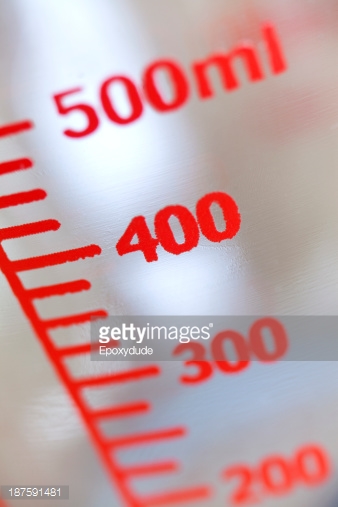Units of Volume
 Fluid volumes used in microfluidics are generally quite small. The most commonly used volumetric units are “milliliters” and “microliters”. Surprisingly even Americans use these metric units.
Fluid volumes used in microfluidics are generally quite small. The most commonly used volumetric units are “milliliters” and “microliters”. Surprisingly even Americans use these metric units. 
- One milliliter (mL) is defined as a one thousandth of a liter (10-3 liter) or one cubic centimeter.
- One microliter (µL) as 10-6 liter (or one cubic milliliter).
For comparison, the average rain drop (according to a Canadian study) has a volume of 15-50 microliters.
[Source: "Measurement of Raindrop Size Distributions Using a Small Doppler Radar" Brain E. Sheppard, Journal of atmospheric and oceanic technology, vol. 7, pp 255-268, (1990)]
Units for Pressure
When it comes to pressure, there are a plethora of units used, and of course in the USA we use a different set of units than the rest of the world.
The pascal (symbol: Pa) is the SI derived unit of pressure. It is defined as one Newton per square meter. One pascal is very low pressure, and typically, one works with multiple units. Common multiple units of the pascal are the hectopascal (1 hPa ≡ 100 Pa), which is equal to 1 mbar, the kilopascal (1 kPa ≡ 1,000 Pa), and the megapascal (1 MPa ≡ 1,000,000 Pa).
In the USA, pressure gauges are often marked in psi or pound per square inch. 1 psi is equal to 6,890 Pa.
We found the following online unit converter to be very practical
